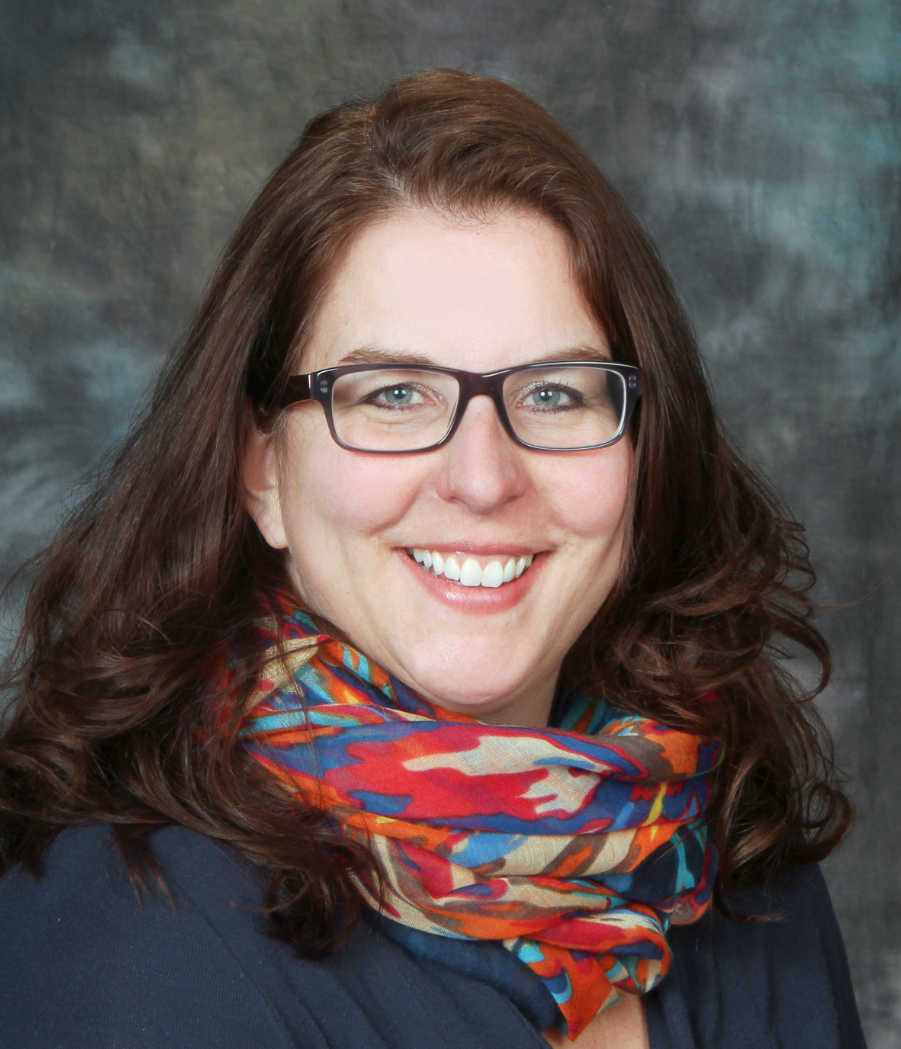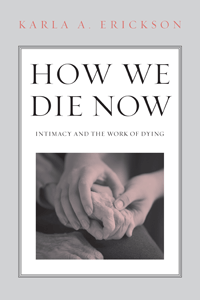Today, SevenPonds speaks with Karla Erickson, Associate Professor of Sociology at Grinnell College in Iowa. With a PhD in American Studies from the University of Minnesota, Karla has written a book on class, community and gendered labor titled The Hungry Cowboy: Service and Community in a Neighborhood Restaurant, and her work has been published in Symbolic Interaction, Space and Culture, Qualitative Sociology, Restaurants: The Book, and Gendered Society. Today, she speaks with us about the research for her second book, How We Die Now: Intimacy and the Work of Dying, which explores the modern phenomenon in which we live longer but die slower.
 Christopher: You just wrote a book called How We Die Now: Intimacy and the Work of Dying. Could you give us a brief description of what it covers?
Christopher: You just wrote a book called How We Die Now: Intimacy and the Work of Dying. Could you give us a brief description of what it covers?
Karla: I was initially interested in the expertise of the people who help us die. But when I talked to end-of-life workers, they kept referring me to the residents, so in my book I ended up telling a broader story about aging, dying and community. Based on the interactions between residents in one particular Midwest community, it shows how we support each other and ourselves now when we live longer and die slower. I interviewed 50 workers and 20 or so residents, and surveyed 100 other residents. It was quite a journey because I expected the book to be mostly about nurses’ aides. They’re the fastest growing job category in the United States who do this amazing work – yet most of us don’t know much about them.
Christopher: Could you tell us more about nurses’ aides?
Karla: I’d say they’re the unsung heroes of our new social terrain, in which we’re living so much longer and dying differently than our grandparents did. Although nurses’ aides are trained mostly to do physical work, they end up doing spiritual and emotional work because they’re so close to the residents. They literally might be the last person you see before you die – and they’re making minimum wage. I thought, “What motivates a person to do that since it uses up so much of one’s self?”
“They’re the fastest growing job category in the United States who do this amazing work – yet we don’t know a whole lot about them.”
So to learn, I trained as a nurse’s aide and got a sense of what your average nurse’s aide is equipped with. In the 70-hour training, there was huge focus on bedsores and helping people physically, but almost nothing about things like sexuality, intimacy, religious beliefs, privacy — things they encounter all the time.
I thought the relationship between nurses’ aides and residents might be antagonistic, but that wasn’t true where I studied. They said one of their primary motivations stems from how they saw themselves as future residents and hope that, since they’re taking care of the elderly now, someone would be there to take care of them. They also do it because it draws on aspects of themselves that they’re proud of. Backbreaking though the work may be, there’s a sacredness and specialness that makes it all worth it.
Christopher: What else did you discover in how we live longer and die slower?
Karla: I became interested in the nurses’ aides because I’m interested in complicated emotional situations in the marketplace – places where the line between private and public blurs. How did we get to the point where the U.S. relies on market-based services more than any other nation? For other countries, the idea of the nursing home is a total betrayal. But in another way the U.S. is the leader in exploring the way we experience the end of life. We live such long lives and often have chronic illnesses that make it hard for family members to take care of us. On the one hand, we really need nursing homes; on the other hand, we’re terrified of them.
In the community I visited, residents talked openly about what they were going through. At first, I sort of had the common belief that people are put in continued retirement facilities because their families simply can’t take care of them. But for this group, the choice had been deliberate. It was something they planned, and sometimes they even had to argue with their children or spouse. They wanted to be in control of this chapter of their lives just like every other chapter. It really pulled back the curtain on a stage of life I myself had been worried about. I don’t mean to cover up the aches and pains and challenges of aging, but in this particular community the people really came into their own and drove their own lives.
“On the one hand, we really need nursing homes; on the other hand, we’re terrified of them.”
Christopher: Do you know if more continued care retirement facilities are like the one you studied?
Karla: What I’ve learned from talking about this research is that there are places like this in almost every region, though there’s a range and of course not all places are like this. But generally, our fears are based on an institution that literally doesn’t exist anymore—it’s been regulated out of existence. I don’t think that there are any nursing homes that are as bad as our cultural fears.
But one thing that I found really alarming in our final chapter is that inequalities are cumulative. All the advantages of wealth and disadvantages of poverty accumulate.
Karla’s Eight Lessons from the End of Life:
1. Avoid overtreatment
2. Make choices
3. Don’t be afraid
4. See it coming
5. Make a plan
6. Act
7. Talk
8. Be grateful
Christopher: Could you say more about what dying means in regard to race, class and gender?
Karla: I was appalled to find out that in terms of average life expectancy, white women live a decade more than black men. And in the 90s, there were huge discrepancies in pain management: people of color were much more likely to die in pain. Also, women do the most of the work of dying and are much more likely to die alone and in poverty.
A lot of my work has been to lower the wall around the end of life and see the way it’s connected to the rest of life, because until we get over the stigma of dying generally, I don’t think we’re going to be equipped to address those serious inequalities. We need to think more about aging and ageism and these really important sites where we either address inequality or else recreate it.
“We need to think more about aging and ageism and these really important sites where we either address inequality or else recreate it.”
One issue my students were particularly interested in is how so many places prevent elders from touching their own bodies. So although retirement homes are now very safe places, there’s still a lot of work to do in terms of cultural sensitivity and being equally welcoming to all types of people. For example, the LGBTQ community runs into problems with retirement facilities that have a religious inclination and won’t let two women share a room. So there are tons of big questions we’ve barely tapped.
Christopher: What do people consider a good death, what do they consider a bad death, and how many are able to have the death they wish for?
Karla: I was really struck by how open and specific they were in talking about their ideal deaths. They’d all talk about wanting to die in their sleep, so much that they’d crack jokes about it. Overall there’s come to be a pretty uniform notion of what a good death would be. As far as bad deaths, they often have very specific examples in mind, but generally one of the harder deaths to go through is where death is always imminent but not really predictable. With all the ups and downs, you don’t know what to do exactly, or when to say goodbye to your loved ones.
Do they have access to a good death? That’s tough to say. There are deaths in which, even with very detailed end-of-life plans and commitments, the body does stuff that our medical system responds to, prolonging that person’s life beyond what’s reasonable. Those are the bad stories people tell. But even with such cases, the residents would say it still makes them confident to have made plans with people who know them and who know what they want. They still have trepidation, of course, but what can you do to settle your fears? You can plan. Then you have to let it go and live.
Christopher: Is there anything else you’d like our readers to know?
Karla: For the people doing the work of assisting other people as they die, how empowering their work is, how they always say they’re grateful for the opportunity. There’s some scary stuff we have to do as a culture to shed light on mortality, but it’s a subject we have to seize upon.
“…what can you do to settle your fears? You can plan. Then you have to let it go and live.”
Christopher: Thank you for speaking with us, Karla!
Karla: Of course!
Watch another interview with Karla Erickson:
More from Professional Advice:
- What Is It Like to Witness the Stages of Dying? An Interview with Sandra Fish
- How Can We Open Conversations about Aging with our Elderly Parents? An Interview with Katharina Dress
- What is a Dementia Provision? An interview with Mike Turbow

 Who Takes Care of Us When We Live Longer and Die Slower? An Interview with Karla Erickson
Who Takes Care of Us When We Live Longer and Die Slower? An Interview with Karla Erickson




 Passing of Beloved Comedian Births a New Comedy Festival
Passing of Beloved Comedian Births a New Comedy Festival

 The Spiritual Symbolism of Cardinals
The Spiritual Symbolism of Cardinals














